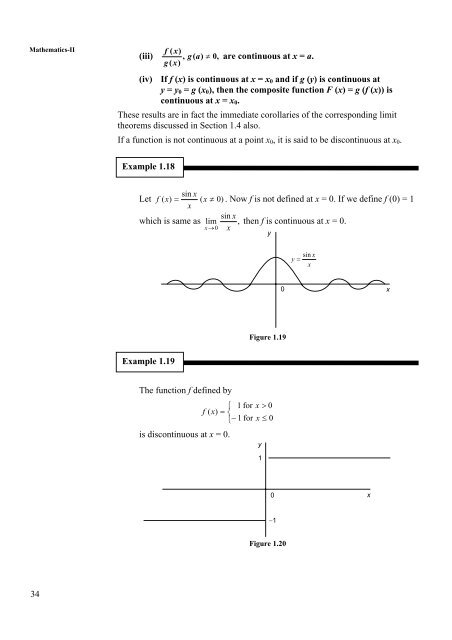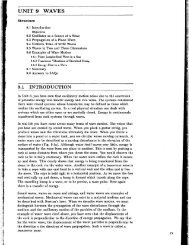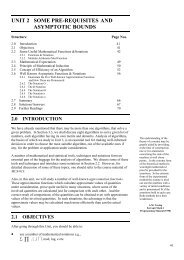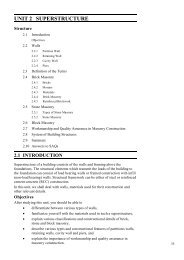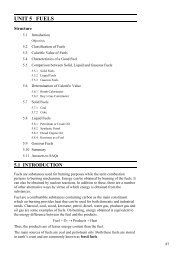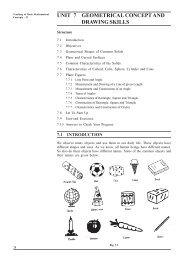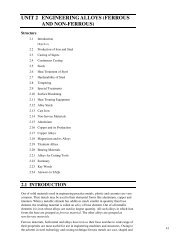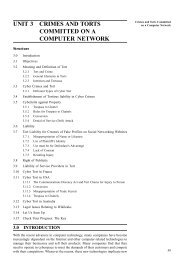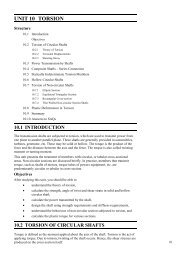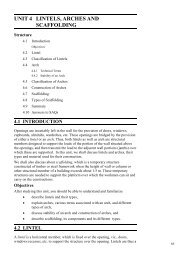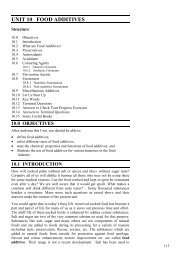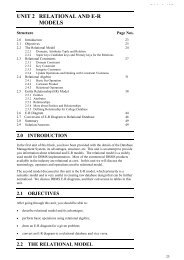unit 1 differential calculus - IGNOU
unit 1 differential calculus - IGNOU
unit 1 differential calculus - IGNOU
Create successful ePaper yourself
Turn your PDF publications into a flip-book with our unique Google optimized e-Paper software.
Mathematics-II<br />
34<br />
f ( x)<br />
(iii) , g ( a)<br />
≠ 0, are continuous at x = a.<br />
g ( x)<br />
(iv) If f (x) is continuous at x = x0 and if g (y) is continuous at<br />
y = y0 = g (x0), then the composite function F (x) = g (f (x)) is<br />
continuous at x = x0.<br />
These results are in fact the immediate corollaries of the corresponding limit<br />
theorems discussed in Section 1.4 also.<br />
If a function is not continuous at a point x0, it is said to be discontinuous at x0.<br />
Example 1.18<br />
sin x<br />
Let f ( x)<br />
= ( x ≠ 0)<br />
. Now f is not defined at x = 0. If we define f (0) = 1<br />
x<br />
sin x<br />
which is same as lim , then f is continuous at x = 0.<br />
x →0<br />
x<br />
y<br />
Example 1.19<br />
The function f defined by<br />
is discontinuous at x = 0.<br />
0<br />
Figure 1.19<br />
⎧ 1 for x > 0<br />
f ( x)<br />
= ⎨<br />
⎩−<br />
1 for x ≤ 0<br />
y<br />
1<br />
0<br />
−1<br />
Figure 1.20<br />
sin x<br />
y =<br />
x<br />
x<br />
x


